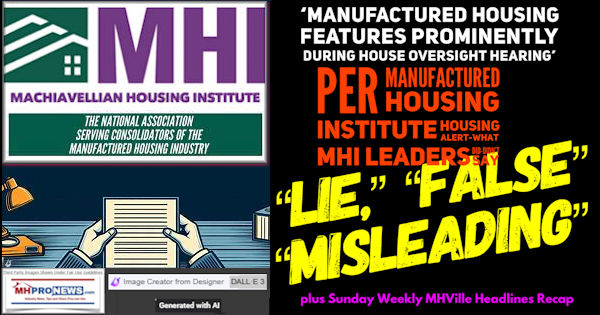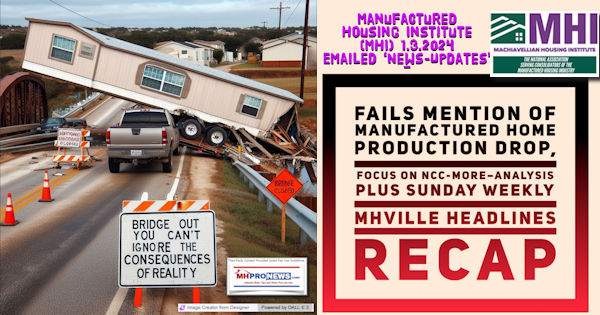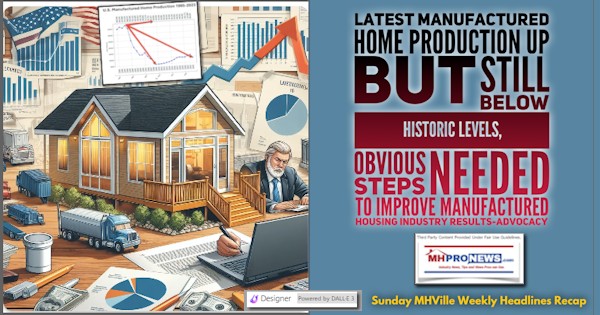
An array of new data and research spotlighted in this Sunday’s MHVille week in review on MHProNews reflects the following. While manufactured housing industry production is up again for the 2nd month, that 2024 year-over-year (YoY) increase over 2023 is still off the production levels from 2022. So, while improving, at the current pace, new manufactured housing production will be well below 2022 and about 75 percent below the last peak in 1998. Note that the U.S. population was significantly smaller in 1998 and favorable manufactured housing legislation was enacted into federal law since. Macrotrends says “The current population of U.S. in 2024 is 341,814,420” and in 1998 it was some 292, 398,554, citing the United Nations (U.N.).
First, the facts for the most recent production and top shipment data shown below is courtesy of the Manufactured Housing Association for Regulatory Reform (MHARR). Then the analysis in brief is found in Part II, followed by the headlines recap Part III and more economic facts from the latest jobs report is in Part IV.
Part I
PRODUCTION GROWTH CONTINUES IN FEBRUARY 2024
Washington, D.C., April 3, 2024 – The Manufactured Housing Association for Regulatory Reform (MHARR) reports that according to official statistics compiled on behalf of the U.S. Department of Housing and Urban Development (HUD), HUD Code manufactured housing industry year-over-year production increased in February 2024. Just-released statistics indicate that HUD Code manufacturers produced 8,355 new homes in February 2024, a 27% increase over the 6,577 new HUD Code homes produced in February 2023. Cumulative production for 2024 now totals 15,830 homes, a 13.6% increase over the 13,528 HUD Code homes produced over the same period in 2023.
A further analysis of the official industry statistics shows that the top ten shipment states from January 2023 — with monthly, cumulative, current reporting year (2024) and prior year (2023) shipments per category as indicated — are:

The February 2024 statistics move Tennessee into the 9th spot on cumulative the top-ten shipment state list, while California moves to 10th place.
The Manufactured Housing Association for Regulatory Reform is a Washington, D.C.- based national trade association representing the views and interests of independent producers of federally regulated manufactured housing. ##
Part II – Additional Information with MHProNews Analysis and Commentary in Brief
As experienced industry pros do (or should) know, the Manufactured Housing Association for Regulatory Reform (MHARR) is a producer’s trade group. MHARR does not collect dues from retailers, communities, lenders, transporters, installers, certain suppliers, or others in the post-production sector of the industry. Those post-production interests fall under the bailiwick of the Manufactured Housing Institute (MHI).
Despite years of claims by MHI that they represent “all segments” of the manufactured home industry and collecting millions of dollars annually in revenues from members and their activities, MHI has apparently failed at the most basic possible metric of all for an industry. That metric is production of new manufactured homes. The significant decline of HUD Code manufactured housing from its last peak in 1998 is well documented as is shown below. Just two years later, landmark legislation was enacted which was dubbed the Manufactured Housing Improvement Act of 2000 (a.k.a. MHIA, 2000 Reform Act, or 2000 Reform Law). Despite being widely bipartisan, that legislation has not been fully and properly implemented, as testimony to Congress from a range of industry professionals attested. See the second linked article from MHLivingNews for some of that industry testimony to Congress.
MHARR has spoken about “The Illusion of Motion” with respect to MHI.
MHARR has also spoken about the “three main bottlenecks” that are thwarting the return of HUD Code manufactured housing to its historic levels and potential to address the affordable housing crisis with a truly free market and proven solution. See that MHARR report on those three bottlenecks linked in the headlines recap that follows.
Economist E.J. Antoni at the Heritage Foundation has spelled out the problem of the effects of the affordable housing crisis in a report covered among the headlines in review on the Daily Business News on MHProNews.
Manzanita Miller via the Daily Torch has pulled together research on younger adults who are increasingly revolting against their status quo. That polled and social-media evidenced rebellion is due in part to Gen X and millennials struggling to earn enough to make ends meet in the self-proclaimed Democratic “Bidenomics” era.
Three reports for the week in review look at different results, remarks, and related reports from corporate and higher profile MHI members.
Instead of showcasing a pro-manufactured housing op-ed that went national that specifically promoted the “enhanced preemption” solution made possible by the 2000 Reform Act, MHI oddly instead “applauds” a New Democrat Coalition plan that fails to mention the 2000 Reform Law or federal preemption, which MHI claims to support.
The entirely predictable outcome from the intersection of these issues and factoids are the rise of what Antoni called “Bidenvilles.” Again, see the report on Antoni’s insights on that topic linked below and how it relates to the Hoovervilles of the past.
The MHLivingNews new production report for February 2024 data is more detailed than the one above. Check that out in the headlines for the week in review.
When it comes to soundbites and snapshots, the case that should be made by MHI and their numerous multi-billion-dollar brands are summed up in bullets like these.
- To solve the affordable housing crisis, good existing federal laws need to be robustly enforced.
- To solve the affordable housing crisis, a clear, appealing, and cogent message could be crafted that YIMBYs, taxpayers, and virtually all others could embrace.
- Federal subsidies for more costly housing have been tried for decades. That approach clearly has not worked for tens of millions in the affordable homeseeking population.
- As the New Democrats Plan noted, millions of new housing units are needed. What that New Dems plan plugged by MHI failed to note is that without millions of more HUD Code manufactured homes, there is literally no currently known way to close the affordable housing gap. These points should beg the question, what is MHI’s authentic vs. claimed agenda?
Many of the reports that follow are deeper dives into the facts, figures and the expert analysis needed to “unleash” manufactured housing’s potential. MHI’s Richard “Dick” Jennison called for changes so that the industry could produce 500,000 new manufactured homes a year about a decade ago. Wasn’t a decade plenty of time to reach that goal? How many sports franchies or elite college football teams would wait a decade without a winning season before making changes?
This next factual snapshot speaks volumes.
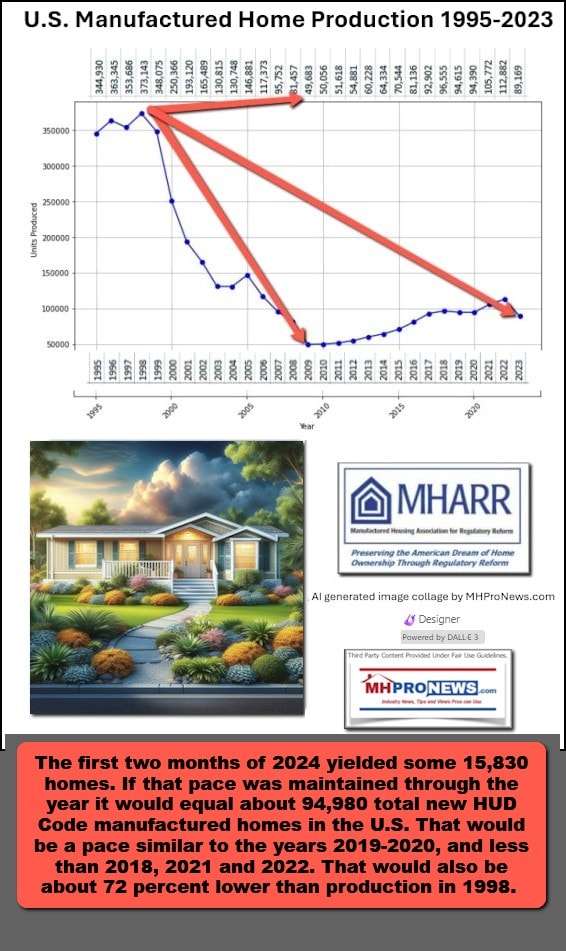
A report planned for next week will elaborate on the remarks from an MHI insider in the headline observation ‘I blame MHI.’ That insider said that the CrossMods misadventure is part of the problem for that trade group, but there is more to it than that, as other reports that follow detail. Because another MHI member firm is involved in that pending story too.
In today’s postscript, see Will Kessler’s keen insights on the latest job numbers, which happen to cite E.J. Antoni.
With no further adieu, here are the headlines for the week that was from 3.31.2024 to 4.7.2024.
Part III
What’s New on MHLivingNews


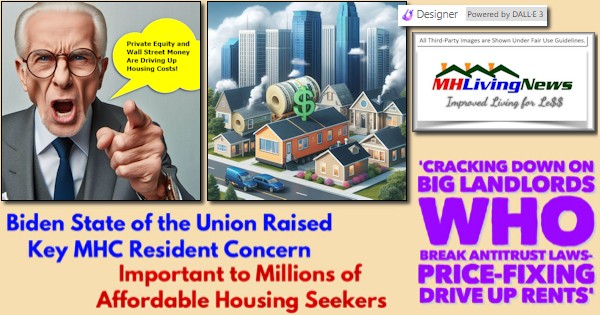



What’s New from Washington D.C. from MHARR
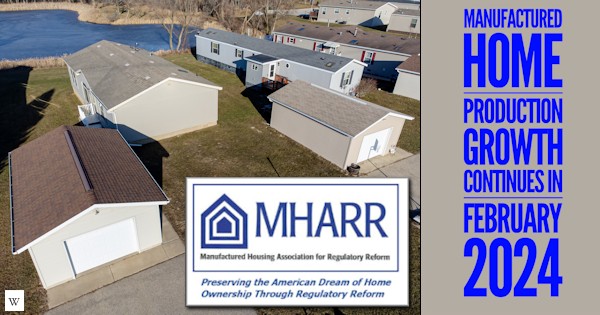
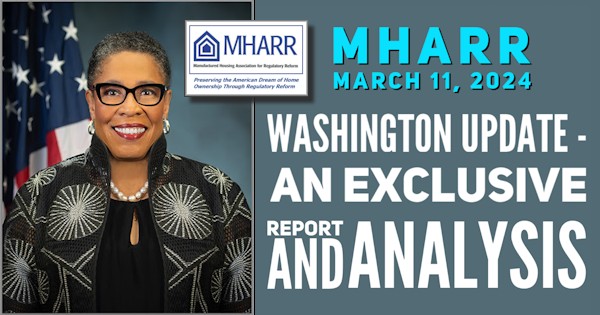
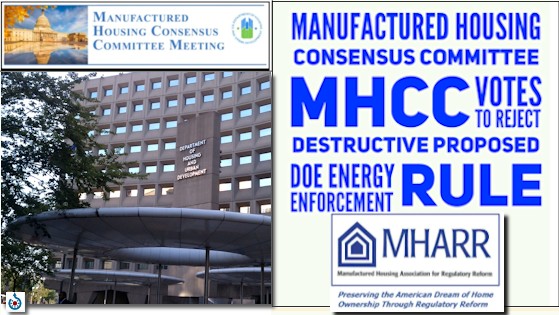
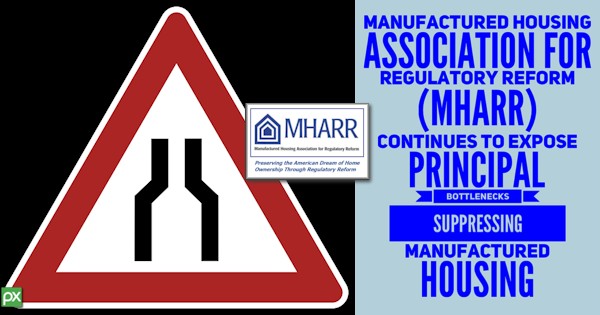
What’s New on the Masthead




What’s New on the Daily Business News on MHProNews
Saturday 4.6.2024

Friday 4.5.2024

Thursday 4.4.2024
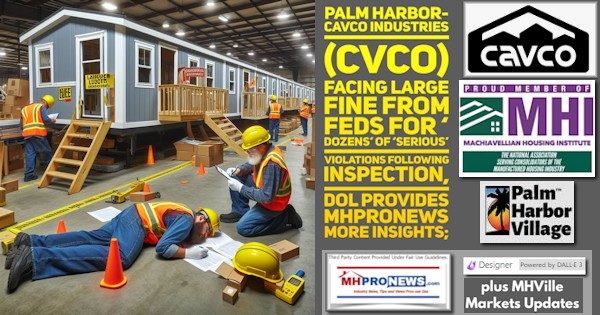
Wednesday 4.3.2024
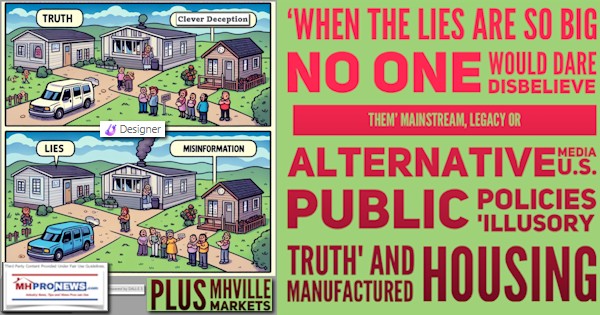
Tuesday 4.2.2024

Monday 4.1.2024
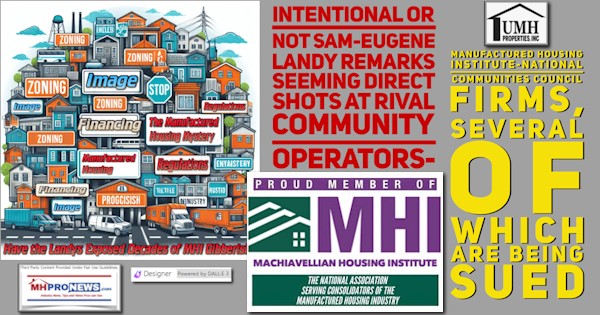
Sunday March 3.31.2024

Part IV
Postscript – Will Kesler via the Daily Signal on “Bidenomics in One Lesson” “Latest Job Gains Fueled by Foreign Born Workers and Government Employees.” Kessler Cited E.J. Antoni as part of his analysis.
On 4.5.2024 Kesler had the following on the latest federal jobs report. A photo caption said: “The government added 71,000 jobs in March, a new all-time record and above the average of 52,000 over the last 12 months.”
ECONOMY | NEWS
Where US Job Growth Occurred in March Reveals the Ugly Truth About ‘Bidenomics’
Huge job gains reported by the Bureau of Labor Statistics in March were fueled largely by increases in government positions and employment of foreign-born workers.
The government added 71,000 jobs in March, a new all-time record and above the average of 52,000 over the last 12 months, bringing the total number of employees to 23,270,000, according to data from the BLS released Friday. The number of employed foreign-born workers increased by 112,000 in March, rising to 31,114,000 from 31,002,000 in February.
The U.S. added 303,000 nonfarm payroll jobs in March, far above economists’ expectations of 200,000, while the unemployment rate ticked down to 3.8% from 3.9%.
In total, the employment level for foreign-born workers has increased by 1,266,000 in the last year, while the number of native-born Americans has fallen by 651,000, according to the BLS. The unemployment rate for foreign-born workers is just 3.6%, while it is 4.0% for native-born workers.
In the last year, 651k native-born Americans have lost jobs, while 1.3 million foreign-born workers have gained jobs: pic.twitter.com/4H57zklf5u
— E.J. Antoni, Ph.D. (@RealEJAntoni) April 5, 2024
The BLS does not record whether foreign-born workers are in the country legally and acknowledges that the survey likely includes illegal immigrants working in the U.S. The U.S. has experienced a surge in illegal immigration under President Joe Biden, with Border Patrol recording around 2 million migrant encounters at the southern border in just fiscal year 2023, up from 1.7 million in fiscal year 2021.
The growth of government jobs in March was followed by an 81,000 gain for health care jobs and a 49,000 increase in jobs in the leisure and hospitality sector, according to the BLS.
March is the fifth month in a row that the number of people employed by the government has hit a new record, beating out the old record that was achieved in May 2010 of 22,996,000 due to a surge in temporary hiring for census collection. Government debt has continued to pile up under Biden, totaling over $34.6 trillion as of Wednesday, according to the Treasury Department.
The White House did not respond to a request for comment from the Daily Caller News Foundation.
Originally published by the Daily Caller News Foundation ##
As MHProNews has reported to industry pros, millions of people illegally entering the U.S. is a major campaign issue because it is an issue that a growing majority of Americans oppose. That more immigration will have a negative impact on jobs, income, and obviously creates added demands on housing ought to be obvious to anyone who understands Economics 101.


From the report linked above: “At the start of 2023, the net cost of illegal immigration for the United States – at the federal, state, and local levels – was at least $150.7 billion.” To put that immense $150 billion dollar figure into a housing context, that is about double what HUD’s entire budget was for 2023. Per the White House Office of Management and Budget, for 2023, HUD’s authority was some $75,706,000,000.
The economic/jobs environment outlined by Kessler, as vexing-to-tragic as it is for tens of millions of Americans, ought to be almost tailor made for manufactured housing. People struggling with their income to make ends meet should relish the opportunity to save money on housing, which is often the single biggest expense.
Which is all the more reason why it is “inexcusable” – as MHARR has occasionally said – that the industry is performing at such a historically low level. See the thoughts of Sam and Eugene Landy with MHI member UMH Properties in the report for 4.1.2024, linked here and above.
Whatever share of responsibility the Manufactured Housing Institute (MHI) leaders have for the 21st century affordable housing fiasco, and the industry’s troubling performance, others ought to be held accountable too. For example.
- Why is it so necessary to have nonprofits advocating to get existing federal laws properly enforced?
- Why don’t federal officials simply do the job that Congress authorized them to do? Not more, not less than what they were authorized to accomplish?
- Why don’t state or local officials follow the law as it applies to them instead of making access to affordable and federally regulated manufactured homes so difficult?
- Why don’t more in mainstream, “corporate,” or legacy media peel back the data, trends, behaviors, and then act as investigators instead of as mere mouthpieces for whatever a federal or corporate official might say?

Manufactured housing has been studied for over a dozen years by Congress, and then has had decades of third-party research that yielded numerous reports that reveal its amazing value.



Manufactured housing is the nearly ‘tailor made’ and proven solution. Other forms of factory building, as measured by key performance metrics, as nice as they may be, do not match the value of modern manufactured homes. Yet as a once independent producer’s leader, Terry Decio lamented, the industry somehow manages to be kept a ‘secret.’ That must require a special kind of genius.


Despite all of the good things someone can legitimately say about manufactured homes, much of the data and information in this report are not to be found on the MHI website. Reports previously provided to the public as free downloads were pulled per the information from MHI linked here. To learn more about the rise and fall of manufactured housing, see the linked and related reports above and which follow. ###
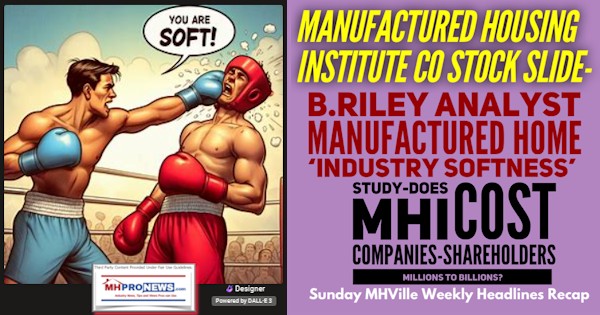
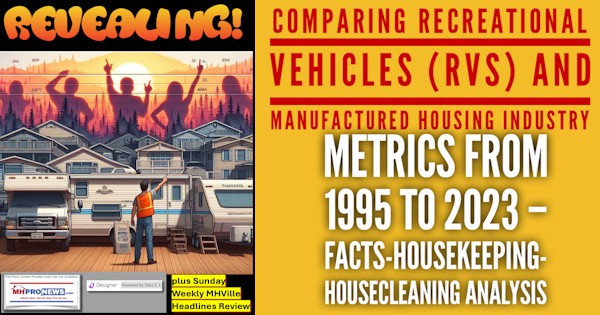




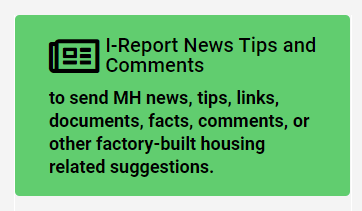
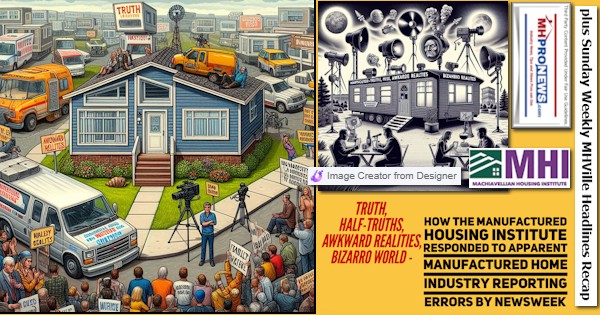
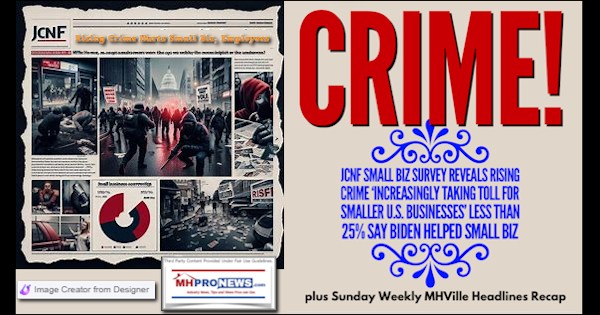
Again, our thanks to free email subscribers and all readers like you, as well as our tipsters/sources, sponsors and God for making and keeping us the runaway number one source for authentic “News through the lens of manufactured homes and factory-built housing” © where “We Provide, You Decide.” © ## (Affordable housing, manufactured homes, reports, fact-checks, analysis, and commentary. Third-party images or content are provided under fair use guidelines for media.) See Related Reports, further below. Text/image boxes often are hot-linked to other reports that can be access by clicking on them.)

By L.A. “Tony” Kovach – for MHProNews.com.
Tony earned a journalism scholarship and earned numerous awards in history and in manufactured housing.
For example, he earned the prestigious Lottinville Award in history from the University of Oklahoma, where he studied history and business management. He’s a managing member and co-founder of LifeStyle Factory Homes, LLC, the parent company to MHProNews, and MHLivingNews.com.
This article reflects the LLC’s and/or the writer’s position and may or may not reflect the views of sponsors or supporters.
Connect on LinkedIn: http://www.linkedin.com/in/latonykovach
Related References:
The text/image boxes below are linked to other reports, which can be accessed by clicking on them.’



